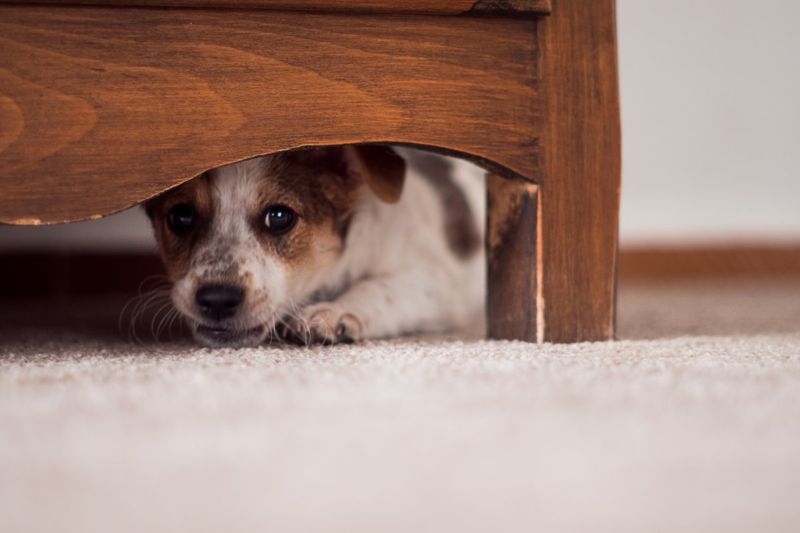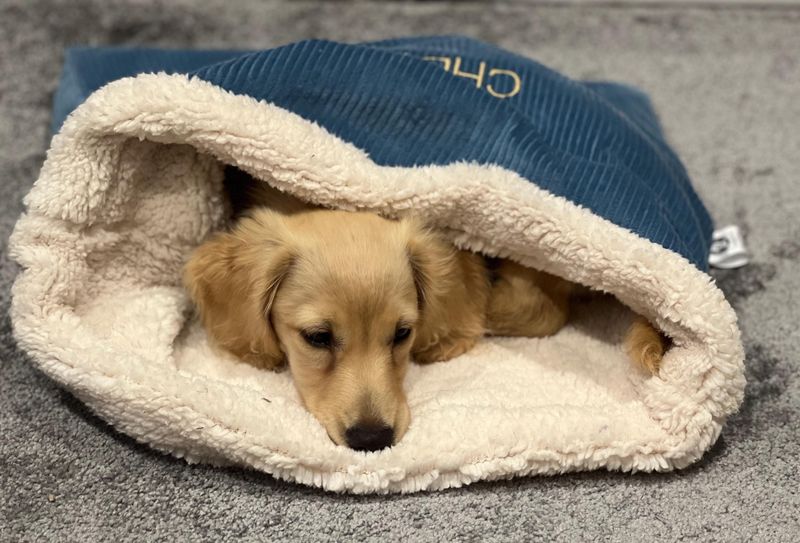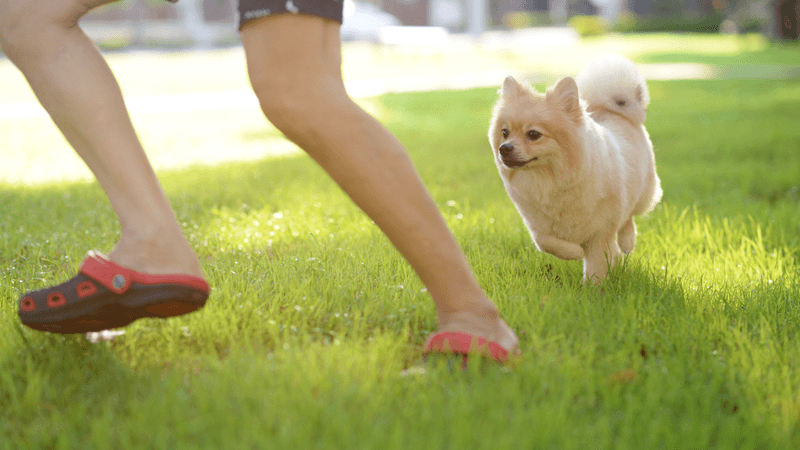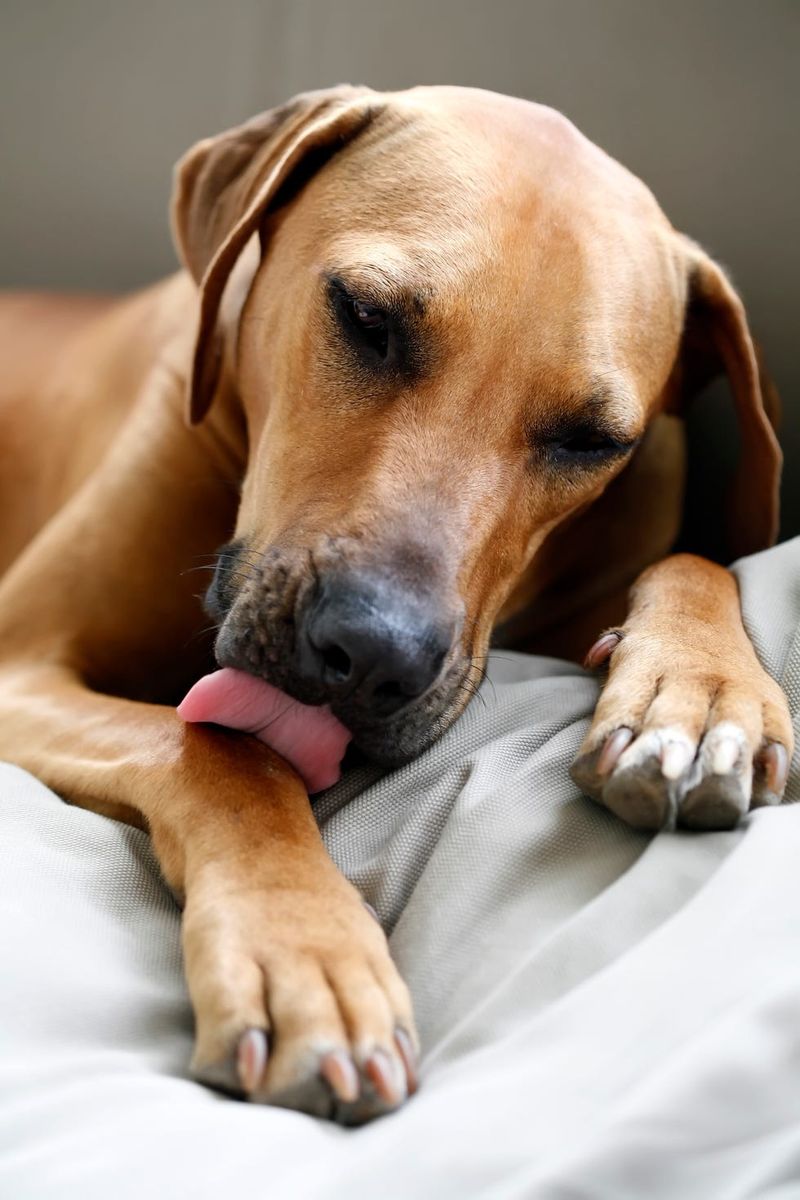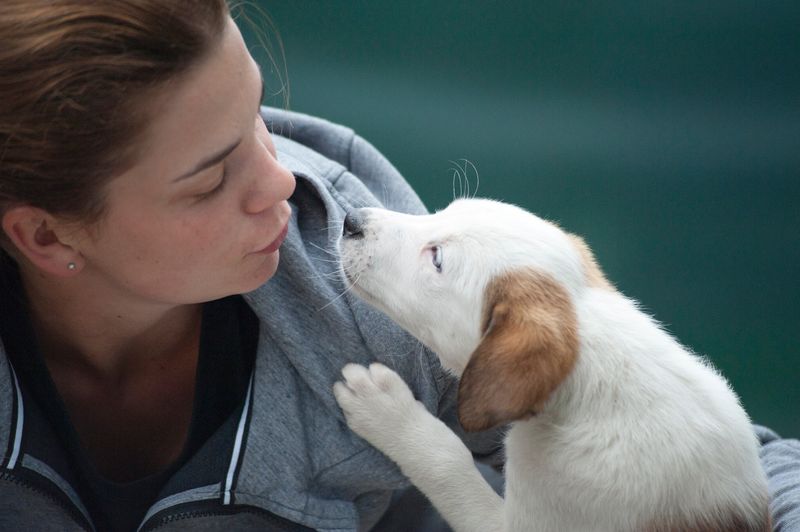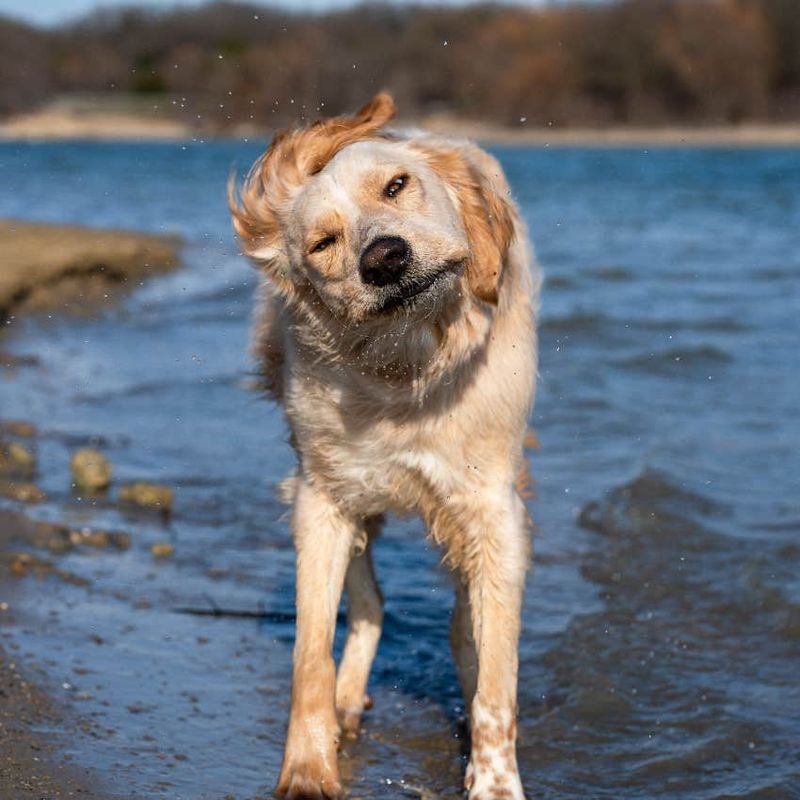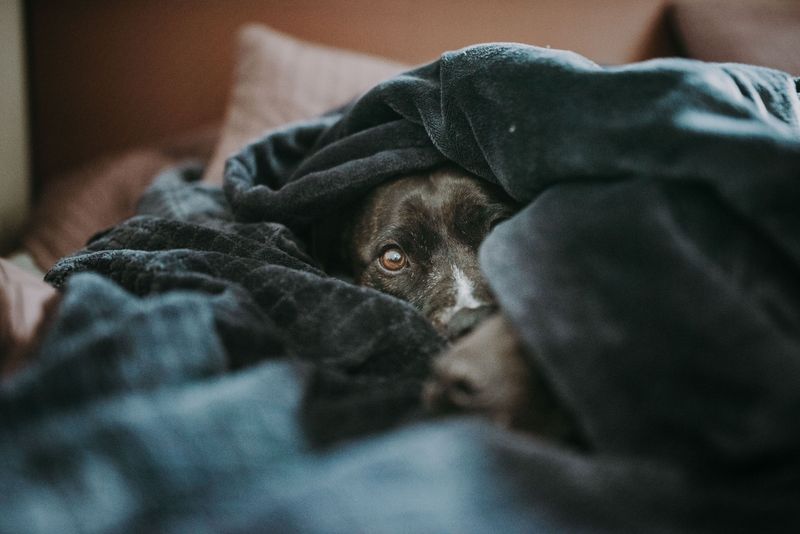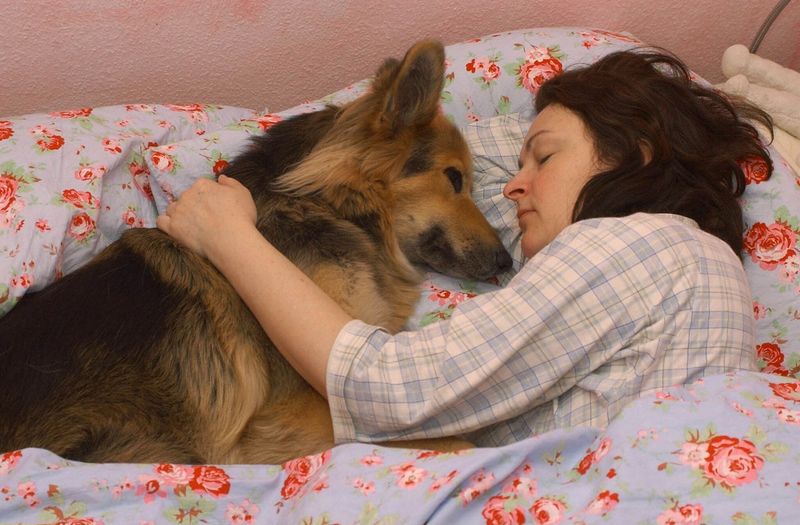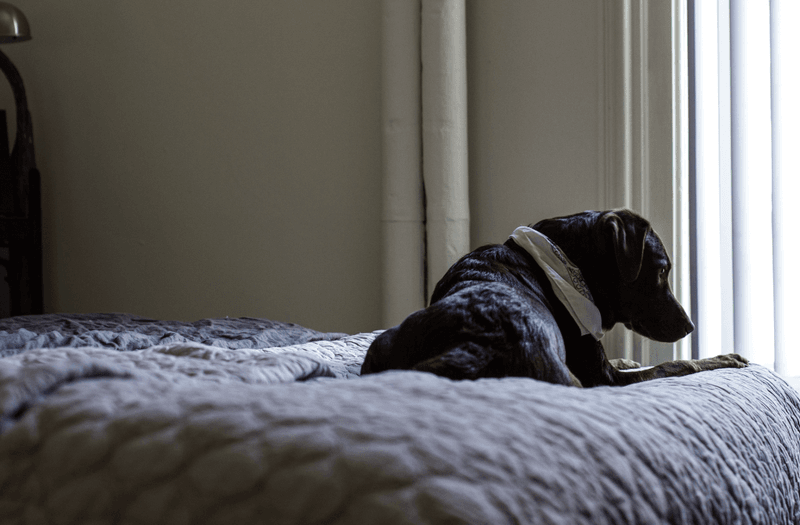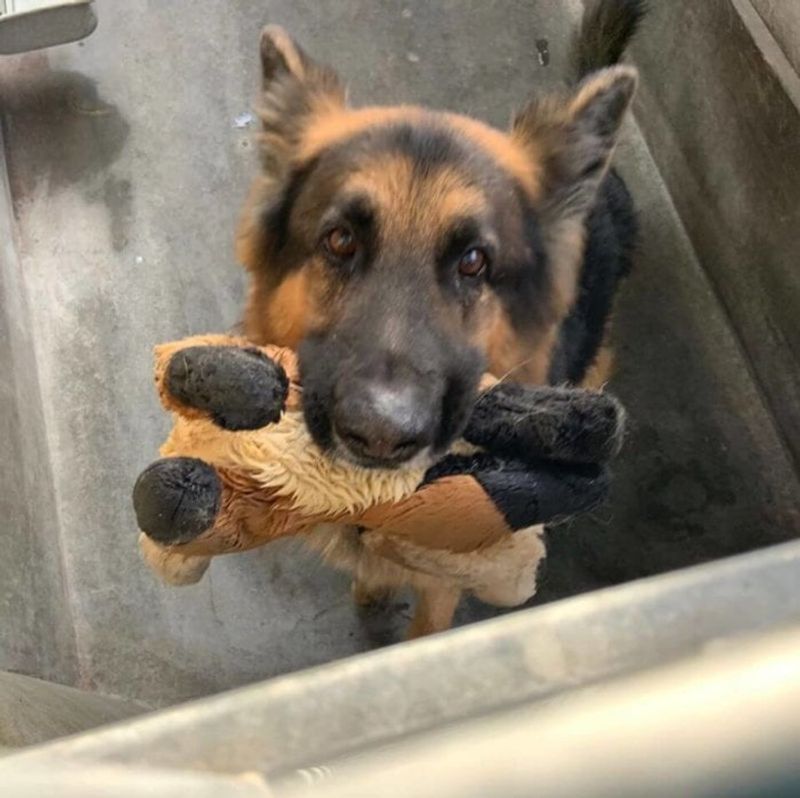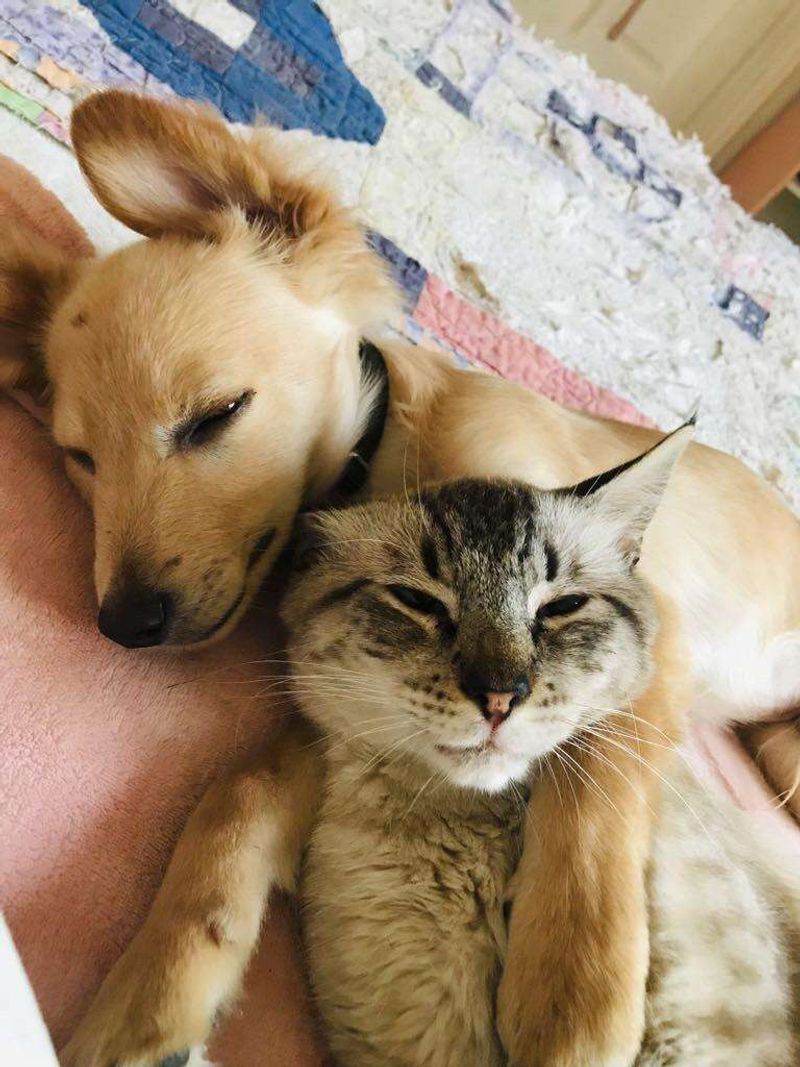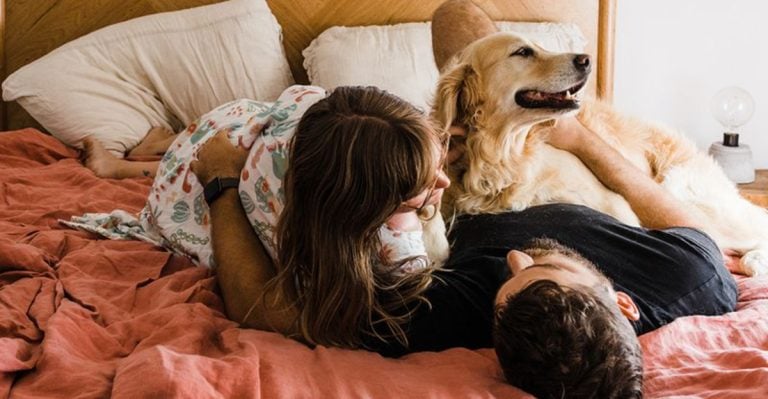When Your Dog’s Scared, Here’s What They Do to Feel Safe
Fear doesn’t just rattle humans—it shakes our dogs, too.
Whether it’s a loud thunderstorm, a sudden shout, an unexpected visitor, or even a vacuum cleaner roaring to life, our canine companions are often more sensitive to the world around them than we realize.
And when something spooks them, their first instinct is simple: seek comfort. But how they do it?
That’s where things get fascinating—and a little heart-melting. You might notice your pup pressing into your side like Velcro, trembling beneath the bed, or licking their paws with intense focus.
These aren’t random behaviors; they’re carefully wired responses to fear and anxiety. Dogs, just like us, have their go-to ways of coping when life gets a little too overwhelming.
Some seek out cozy hiding spots. Others need a warm lap and a few soothing words. And some grab their favorite toy like it’s a security blanket straight out of puppyhood.
Understanding how dogs seek comfort after being scared isn’t just about being a more empathetic pet parent—it’s also about knowing what they’re trying to tell you without words.
These gestures are little emotional signals, waving flags that say, “I need you right now,” or “I’m trying to calm myself down.”
In this article, we’re diving into 16 common ways dogs seek out comfort after something has frightened them.
From physical closeness to quirky little rituals, each behavior offers a peek into the emotional world of your pup—and a reminder that love, patience, and a little understanding go a long way when your dog’s feeling shaken.
1. Cuddling with Their Human
When fear strikes, many dogs instinctively turn to their favorite human for comfort. They might curl into your lap, press their body against your legs, or even climb on top of you—just to feel close.
Your presence, warmth, and scent can work wonders to calm their frazzled nerves.
This behavior is more than just cute—it’s rooted in the bond you’ve built. Dogs are pack animals, and you’re their safe zone. In your arms, the world feels less scary, and they can begin to relax.
2. Hiding Under Furniture or in Crates
Some dogs don’t want snuggles right away—they want solitude. When they’re scared, they often dash under beds, behind couches, or into their crate.
These small, dark spaces mimic dens and help them feel secure and out of reach from perceived threats.
It’s important not to drag them out. Let them stay tucked away until they’re ready. Just knowing they have a private hideaway can help them self-soothe and recover at their own pace.
3. Seeking Out Familiar Scents
Dogs have incredibly powerful noses, and when they’re scared, they turn to smell to find safety. A shirt you’ve worn, a favorite blanket, or even the corner of the couch where you always sit can be enough to make them feel better.
It’s not just about the scent—it’s about association. These familiar smells are tied to love, routine, and protection. They’ll often nuzzle or curl up with the item, finding comfort in the invisible presence of their person.
4. Following You Everywhere
After a scare, your dog may suddenly become your shadow. Every room you walk into? They’re there. Every step you take? They’re just a pace behind. This clinginess isn’t a quirk—it’s a deep-seated need for security.
You’re their rock, and sticking by your side helps them feel safe while they process the fear. It might be inconvenient during bathroom breaks, but to them, you’re their anchor in a moment of chaos.
5. Licking or Grooming Themselves
When a dog starts licking their paws or grooming obsessively after being startled, they’re not just cleaning—they’re coping.
This repetitive behavior is self-soothing, much like how a child might suck their thumb or an adult might wring their hands under stress.
It’s a way for dogs to regain control in a situation that made them feel powerless. While a little licking is normal, excessive grooming that leads to irritation could signal prolonged anxiety and might need a vet’s input.
6. Panting and Pacing Less Once You Speak Calmly
A frightened dog will often pant heavily and pace in circles, but your calm voice can act like a balm. When you speak softly, crouch to their level, or gently pet them, you may notice their breathing slow and their movements settle.
Dogs respond strongly to tone. Your calm demeanor reassures them that there’s no danger, helping them return to a more balanced state faster. It’s your voice—not your volume—that tells them everything’s going to be okay.
7. Shaking It Off—Literally
You’ve probably seen your dog do a full-body shake, like they just stepped out of a bath. But if nothing’s wet, it’s likely emotional residue they’re shedding. This instinctive shake-off is their way of releasing stress or tension from their body.
It’s almost like a mental reset button. After something scary—like a car backfiring or an argument in the house—this shake can help them move forward. If you spot it, it’s actually a great sign they’re starting to feel better.
8. Chewing on Toys
When fear creeps in, some dogs turn to chewing—not destructively, but therapeutically. A soft toy, a favorite squeaky, or a durable chew bone becomes more than just a plaything; it’s a calming tool.
Chewing helps dogs focus their energy and distracts them from whatever triggered their fear.
It’s rhythmic, grounding, and emotionally centering. Just make sure they have access to safe, appropriate items so they can channel that anxiety into something productive.
9. Burying Their Head
Some dogs seek solace by burying their heads—in your arms, under pillows, or even into a blanket. It’s their way of shutting out the world for a bit. This behavior may look dramatic, but it’s incredibly effective for them.
It simulates the comfort of being hidden in a den, where no one can see them, touch them, or add to their anxiety. If they choose your lap as their hiding place, consider it a compliment—they trust you completely.
10. Climbing into Bed with You
Your bed is basically a sanctuary for your dog. It smells like you, it’s warm, and it’s a place where good things—like snuggles and naps—tend to happen. After a scare, jumping up there is their way of hitting the emotional reset button.
Being close to you in such a soft, secure environment brings their nervous system back into balance. If they stretch out next to you and finally relax, it’s a clear sign they’ve found their peace.
11. Seeking Physical Contact
Not all dogs are natural cuddlers, but after something frightening, many will break character and seek out touch. They might paw at you, lean heavily against your leg, or place their head gently on your knee.
This physical closeness offers reassurance and warmth. It’s also their way of saying, “I’m not okay—can I stay close?” Even a simple touch can go a long way in calming them down and rebuilding their confidence.
12. Being Extra Quiet
Fear doesn’t always show up as barking or pacing. Some dogs go silent, almost frozen. This withdrawal is their way of processing what just happened—shutting down the external world so they can sort through the stress internally.
If your usually bouncy pup suddenly goes still and quiet, they may be feeling overwhelmed. Give them space, but stay nearby. Your calm presence without pressure to interact can help them slowly come out of that shell.
13. Whining for Attention
Whining is often dismissed as annoying, but it’s one of the clearest cries for comfort a dog can make. After a scare, it’s their version of, “Hey, I need you right now.”
They may be asking for a cuddle, a soft word, or just your company. Responding with patience rather than frustration helps them feel heard and safe. Over time, consistent reassurance can make these moments less frequent and more manageable.
14. Burrowing in Blankets
Some dogs go full burrito when they’re scared—wrapping themselves tightly in blankets or nestling deep under covers. This snug little hideaway helps them block out external chaos and feel protected from whatever just startled them.
It mimics the safety of a den, giving them a dark, quiet, pressure-filled space to recover in peace. Let them burrow if they need to—it’s not just cute, it’s therapeutic.
15. Carrying Something in Their Mouth
You might find your dog pacing nervously with a toy, shoe, or even your sock in their mouth after they’ve been frightened. This isn’t random—it’s a way to feel in control during an emotionally turbulent moment.
The item usually carries a familiar scent or comforting texture. Carrying it gives them focus, purpose, and a sense of normalcy amid chaos. As long as it’s safe, let them keep it close until the storm (literal or emotional) passes.
16. Staying Close to Another Pet
If your dog has a bonded companion—another dog, a cat, or even a calm rabbit—they may seek them out when afraid. Cuddling up or simply staying nearby offers them comfort through pack instinct.
Animals that cohabitate often pick up on each other’s emotional cues. If one is anxious, the other might become a source of calm. This dynamic doesn’t replace your support, but it certainly adds an extra layer of reassurance.


